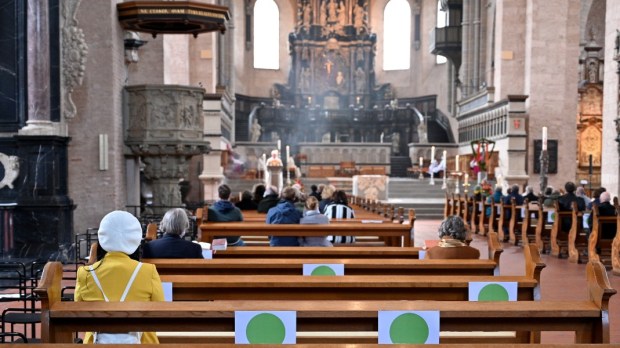As countries pass the “peaks” or turning points of COVID-19 cases, their people slowly return to normal, to a life without confinement, although all the changes will be staggered, following the guidelines set by the World Health Organization and local governments.
The same goes for the reopening of churches and other houses of worship. Some countries have reopened as normal: those that have reported a very low or nonexistent coronavirus infection rate and virtually no mortality. A good part of these countries are in Asia, where the pandemic started. The list includes South Korea, Japan, Vietnam, Chile, Panama, Poland, Paraguay, and Israel, among others.
In the next two weeks, houses of worship are expected to open in almost all European countries, including Spain, France, Germany, Italy, Great Britain, Belgium, Holland, and some states of the United States and South America. The opening will be done taking precautions to avoid a resurgence of the pandemic. Some dioceses have already begun, with certain measures.
At this point, we should acknowledge the example and dedication of priests and men and women religious during confinement. They did everything possible to make sure that the sacraments were provided, whenever possible, to the sick and to confined families. The great work of volunteers in parishes and Catholic organizations should also be recognized.
It has been edifying to see how people have used new technologies to bring peace and hope and to strengthen the faith of all the faithful who were unable to go out to church. In addition, many churches, although they could not yet offer public worship, opened their doors so that the faithful who could—those who lived closest—go to pray, keeping their distance and following the advice given by the authorities during confinement.
What might it be like to go to Mass after the coronavirus?
What policies have the Episcopal Conferences and individual bishops followed in the face of the coronavirus pandemic?
I have reviewed a good part of the documents issued by the various Bishops’ Conferences during the coronavirus. In the light of that, I can say that the bishops have followed the health indications of the civil authorities and cooperated with them, both in confinement and in re-opening. It is impossible, with the space we have available, to quote all the Episcopal Conferences.
Many are now negotiating with their local governments to stagger the re-opening to avoid a resurgence of the pandemic.
As far as worship is concerned, some episcopal conferences—not all—have advised taking the following precautions for reasons of security and health: to give Communion by hand; not to take Communion under both species (that is, not to drink from the chalice the Blood of Christ); to omit the greeting of peace or to substitute a hand-shake with a bow of the head; to maintain distances of two meters between people in the pews; to increase the number of Masses so that everyone can attend; to avoid the use of holy water at the door of the churches; and as far as possible, for churches to have disinfectants at the entrance to the temple.
In all open churches, and on digital platforms, prayers have been raised to God and the Blessed Virgin to ask for the end of the pandemic, following the example of Pope Francis, who has already asked the Virgin Mary under the title of “Salus Populi Romani” (“Health of the Roman People”) for the end of the pandemic.
The bishops of the Philippines, for their part, have decided to consecrate the islands and all the people to the Immaculate Heart of Mary. The ceremony will take place on May 13, the feast of Our Lady of Fatima and the anniversary of the first apparition of Our Lady to the three little shepherds. The Philippine bishops are thus following the example of the consecration made by the bishops of the United States and Canada to the Virgin Mary on this past May 1, and of many other countries.
On Easter Sunday, for example, the Episcopal Council of Latin America and the Caribbean (CELAM) consecrated their respective nations to Our Lady of Guadalupe.
Since this is the month of May, a month dedicated to the Virgin Mary, the praying of the Holy Rosary is being transmitted over the internet by many dioceses, as requested by the Pope.
Paraguay has raised its prayers and its offering to the Virgin of Caacupé. In Cuba there are virtual pilgrimages taking place this month, according to the Cuban press. In China, the Church, although persecuted, has helped give masks to those who need them, as well as food and assistance for the most needy, according to Zenit.
The African bishops, gathered at the Conference of the Bishops of Africa and Madagascar (SECAM) in Nairobi, Kenya, under the presidency of Cardinal Philippe Ouedraogo of Burkina Faso, have asked for prayers for the end of the pandemic and have asked the faithful to pray the Holy Rosary, as requested by the Holy Father.
Without a doubt, fidelity to Pope Francis and coordination with civil authorities have been the two guidelines followed by Episcopal Conferences throughout the world, while facilitating as much as possible the sacraments and spiritual and human assistance to the faithful.

